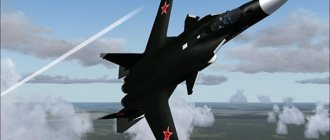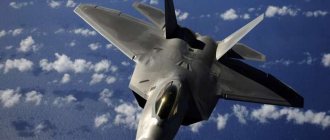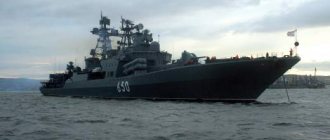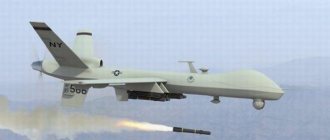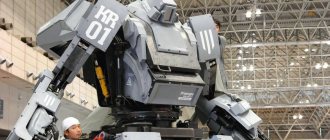Already this year, Aurora Flight Sciences plans to release the first solar-powered unmanned aircraft. Odysseus will be able to fly continuously for several months in a row, conduct research and not pollute the atmosphere. It can also be reprogrammed for other tasks.
© aurora
It seems that this is the greatest achievement in the world of aviation. But the world does not stand still, and the aviation of the future is becoming more interesting and unusual.
© Aurora
We at Joy-pup.com have already told you about the superyachts of the future, some of which resemble tropical islands. Now we present the top aircraft of the future, on which flying will be a complete pleasure.
Hypersonic aircraft
These are projects of the near future that are already becoming a reality. Last June, Boeing presented a project for a hypersonic aircraft that would be better than the well-known Concorde. This flying car will have to fly from New York to London in just 2 hours, and from New York to Tokyo in 3 hours. The speed of such an aircraft should exceed 6 thousand km/h, which is 5 times higher than the speed of sound. For comparison, Concorde's speed was only 2 times the speed of sound. It is expected that the first such aircraft will leave the assembly line in 20 years.
© Boeing
According to Boeing representatives, this aircraft can be used for both commercial and military purposes. Judging by the number of windows on the concept, it will be able to carry about 32 passengers, plus crew. The fuselage itself has a streamlined shape with a needle-shaped nose, which minimizes the strong sonic boom. Most likely, such an aircraft will run on cryogenic hydrogen fuel.
They are also creating a supersonic aircraft in Russia. The Aerohydrodynamic Institute named after Professor N.E. Zhukovsky (TsAGI) is working on a project for the HEXAFLY-INT with liquid hydrogen engines. Most likely, it will appear no earlier than 2030 and will carry out passenger transportation throughout the country.
This will be a futuristic aircraft that has a wave-riding configuration. Thanks to the delta wing with a small blunt leading edge and a negative transverse V-shape, air resistance is reduced. The air intake itself is integrated into the overall external shape. The combination of these characteristics makes it possible to significantly increase lift and aerodynamic qualities in hypersonic modes. To control the aircraft, elevons are used, which are located at the end of the wing. The model will accommodate about 300 people, and its length will be 90 meters.
What does the coming day have in store for us?
The hopes of the domestic aircraft industry are connected not only with the Sukhoi Superjet 100, but also with the project designated MS-21 (Magic Aircraft of the 21st Century). Its developer is the Irkut Corporation, which today held an exhibition of the MS-21-300, intended for flight testing. The first flight of the new medium-haul passenger airliner is scheduled for the end of this year.
The mainline aircraft of the 21st century is part of the MC-21 family, which includes two models. MS-21-200 is designed to carry from 132 to 165 passengers, MS-21-300 is capable of carrying from 163 to 211 passengers. The aircraft is equipped with a high aspect ratio composite wing, an increased fuselage diameter, as well as the latest generation engines and systems. The airliner, developed on the basis of the Yak-242 project of the Yakovlev Design Bureau, can be operated in any climatic zone.
Irkut MS-21 (“Magic Aircraft of the 21st Century”) / ©ime4aviation.com
According to initial plans, the Russian aircraft was supposed to compete with Boeing and Airbus airliners. At the same time, according to experts, the main competitor of the MC-21 will be the Chinese passenger aircraft Comac C919.
The latter, by the way, is also of great interest to specialists. The Comac C919 will be the largest mass-produced passenger aircraft in Chinese history. But interest in him is caused not only by this. The new Chinese development is an important step in a long-term program aimed at overcoming the monopoly of Western powers in aircraft manufacturing.
When it comes to projects of the near future, the first thing that comes to mind is the Airbus A350. In the A350-1000 modification, the new passenger aircraft will be able to carry up to three hundred and fifty passengers. In the Airbus line of aircraft, it is intended to replace the A340, and also complement the more modern A330.
It is the A350 that in the near future will be the main competitor of the Dreamliner. As is the case with Boeing's new development, new materials will be widely used in the design of the A350. Composites will make up 52% of the aircraft's total weight. Despite the fierce competition in the passenger aviation market, we can already say with confidence that the A350 will be a commercially successful project.
Airbus A350 - long-range wide-body airliner / ©Airbus
Another interesting development by Airbus is the narrow-body passenger aircraft A320neo, created on the basis of the A320. The project is based on reducing fuel consumption. Compared to the base version, the new engines will allow the A320neo to reduce fuel consumption by 15%. This will make operating aircraft more cost-effective. In addition, this approach is designed to reduce the amount of harmful emissions. The start of operation of the A320neo is scheduled for 2016.
In response to the European development of the A320neo, Boeing recently began designing the 737 MAX model. The basis for the new aircraft was the world's most popular narrow-body passenger aircraft, the Boeing 737. According to company representatives, the Boeing 737 MAX will consume 4% less fuel than its European competitor. Deliveries of the airliner to customers are scheduled for 2017.
In general, very soon a real battle of the titans will unfold on the international passenger aircraft market.
The world's largest passenger aircraft is the Airbus A380. Its length is 72 meters, and its wingspan reaches 79 meters. The plane can carry up to 853 (!) passengers. And if the cabin is divided into three classes, they can accommodate up to 525 passengers, which is also a lot. More than one hundred A380s have been built to date. The total order portfolio for it exceeds 260 vehicles. Of all the Russian airlines, it placed an order for the A380.
Electric airplanes
Aviation of the future is safe and environmentally friendly. Thus, the Norwegian company Avinor presented a project for a commercial flight using an electric aircraft for 19 passengers. The aircraft is being developed by Pipistrel; it will have an electric motor with a power of 50 kilowatts and a battery with a capacity of 21 kilowatts per hour, and will be able to stay in the air for up to 1 hour. The first flight is due to take place in 2025, and in 2040 all short-haul aircraft in Norway will switch to electricity.
© Pipistrel
Note that this is not the first electric aircraft. For example, since 2015, Pipistrel has been producing a two-seat aircraft, Alpha Electro . But it is intended only for training.
They plan to install an electric engine on the Lilium , which will feature vertical takeoff and landing. That is, it does not need an airport at all, and it itself will be classified as light air transport. The model will be able to reach speeds of up to 400 km/h, but will fly about 500 km on one charged battery.
© Lilium
The aircraft has 3 control modes. This is traditional control from the pilot's cabin, control via a remote control from the ground and using the autopilot. Thanks to the electric motor, the cabin will be almost silent. The model itself is designed for two people.
Vertical is needed at sea and on land
The hangar capacity of our promising UDC can accommodate, according to rough estimates, 8–12 VTOL aircraft along with three to four Ka-31 RLD helicopters. When guiding shore-based AWACS aircraft, it will be possible to simultaneously bring up to two units into battle at a distance of up to 400 kilometers from the ship. Such capabilities will allow our promising UDC as a light aircraft carrier to solve the problem of covering small groups of surface ships in operationally important areas from attacks by small groups of enemy aircraft (up to 6-8 aircraft) and to ensure the combat stability of submarines from attacks by enemy base patrol aircraft (BPA). Both of these tasks are critical to maintaining a favorable operational environment.
As the experience of the combat use of American UDCs during the aggression against Yugoslavia shows, an air group of such ships can be effectively used to strike ground targets both as part of massive air and missile strikes and during systematic operations. Thus, if Russia has modern VTOL aircraft, our promising UDC may turn out to be a very effective light aircraft carrier, capable, depending on the composition of the air group, of solving tasks to combat submarines or air enemies, and delivering limited attacks on small groups of surface ships and individual ground targets.
Minimum fuel consumption
Large passenger planes consume a lot of fuel. Box Wing concept - these are conventional aircraft that will use lightweight materials and a special wing design with a lift-to-drag ratio 16% higher than that of conventional aircraft. This will allow them to fly longer and consume minimal fuel.
© NASA
The researchers abandoned turbofan engines in favor of a dual-channel turbofan and 40% larger engine blades. This allows you to reduce fuel consumption by 50% and make steeper landings and takeoffs. The aircraft will be presented in 2025.
MS-21-310 - PERSPECTIVE, PASSENGER, OUR
The MS-21 medium-range passenger aircraft, the main hope of our civil aviation industry, was already presented at MAKS two years ago.
This time it is also on the list of new products. And it’s not surprising - the car is constantly being modernized, replacing imported components with domestic ones. Last time it took off here with an American engine, and today the new modification MS-21-310 is pulled into the sky by our PD-14 - a new generation engine based on Russian technologies.
A pair of MC-21-310 aircraft in the airspace of the MAKS 2021 air show.
Photo: Vladimir VELENGURIN
Moreover, this aircraft will also be a novelty in two years: in 2023 it should take off with fully composite domestic wings. Their first batch has already been delivered to the aircraft plant in Irkutsk.
In general, the MS-21 can be called the flagship of import substitution: more than 80 percent of its components are produced in Russia.
Air taxi
Air taxis can also be called airplanes of the future. Pop.Up Next is a drone car with modular components. This is a joint development of the German automobile company Audi AG and the aircraft manufacturing company Airbus. The design company ItalDesign Giugiaro also took part. The 60 kW electric chassis is attached to the passenger capsule, giving you an electric vehicle. There is also a flying module that can be called using a special application. It attaches to the roof of the capsule and lifts the car into the sky.
To transfer the vehicle capsule to the drone and subsequent unloading, the wheel base is equipped with a lift. The people in the cabin are simple passengers, and all control, including transformation into each state and overcoming the route, is carried out automatically.
The two-seater capsule of the Pop.Up car is made of carbon fiber. It has dimensions of 2.6 m in length and 1.4 m in width, as well as 1.5 m in height. In air mode, flight and landing are vertical, and the maximum flight range is 100 km. Electric motors can reach speeds of up to 100 km/h. The wheelbase can travel up to 130 km and the maximum speed is 100 km/h.
As we see, the aircraft of the future are becoming more interesting and unusual. And it’s not just about design, but also about new trends, including environmental friendliness, convenience and super-speed.
NEW FIGHTER
Of course, the main sensation of the air show was the light tactical fighter Checkmate (“Checkmate”) presented on the first day. This is the younger brother of our main military aircraft development - the Su-57, even its index will most likely be mirrored - Su-75.
The main sensation of the air show was the light tactical fighter Checkmate (“Checkmate”), also known as the Su-75.
Photo: Vladimir VELENGURIN
Checkmate is not even an airplane, but rather a platform, on its basis new fighters will be created. The developers promise that the car will surpass its main competitors - the American F-35, the French Rafale and the Swedish Gripen. True, our fighter is cheaper.
A special pavilion has been equipped for the presentation of Checkmate at MAKS.
PCR test - 48 hours
The pandemic has made adjustments to the rules for visiting the air show. Any spectator must have an identity card and a document confirming the absence of coronavirus infection. That is, either a PCR test or a QR code. Yes, yes, they work too.
But please note that if you are traveling with PCR, it should be done no more than two days before visiting Zhukovsky. Not 72 hours, as we had gotten used to, but 48 (!) - this rule was introduced by the authorities of the Moscow region.
However, the organizers have agreed with some laboratories on special conditions and a special price if you come to take tests with a ticket. Their full list is on the organizers' website.
We called one of these laboratories. Indeed, guests of the air show have a 20 percent discount. But the results of a regular test will be ready in two days, that is, it is almost impossible to comply with the 48-hour rule. However, you can take a rapid test at the laboratory in Zhukovsky. It is more expensive, but a discount is also provided. The results will be ready in 5 hours.
— So you have to arrive at 10 am, take the test and wait until about 3 pm, and then go to MAX? - we asked. Even on the phone, you could feel the girl on the other end throwing up her hands.
But with a QR code confirming your vaccination, you are king. Show me at the checkpoint, and go wherever you want.
Important!
Visitors under 18 years of age do not need to take any tests. This was stated by Deputy General Director Vladimir Sovetkin.
MAX plan.
Photo: Dmitry POLUKHIN
MAL DA DAL
Small aviation traditionally attracts a lot of spectators at MAKS. And this year there is especially something to see.
For example, the Partizan aircraft project, which is represented by the Foundation for Advanced Research. It is capable of rising into the air from a platform measuring only 50 by 50 meters.
The name was born from its ability to deliver cargo to a small, almost unequipped site - oh, how useful such an aircraft would have been during the Great Patriotic War! The flight range of the Partizan is about 1000 kilometers at a speed of 250 kilometers per hour. The first takeoff is scheduled for 2022.
"Baikal" is a replacement for outdated maize trucks.
The light multipurpose aircraft LMS-901 “Baikal” should also make its first flight this year. This machine should replace the veteran An-2 and thereby revive Russian small aviation. The Baikal is smaller in size than a maize truck, has a higher speed, and can fly longer without refueling. All this will help him bring hard-to-reach regions closer.
